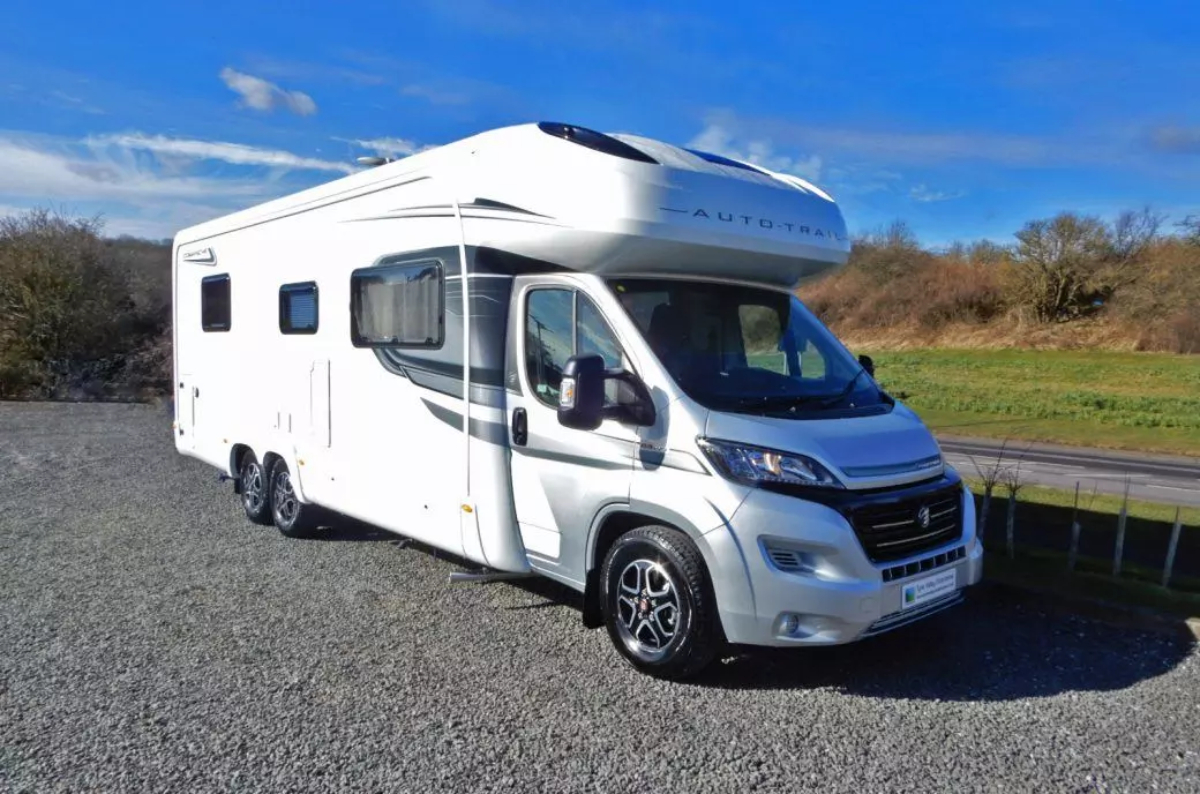Our guide "What to Know Before Driving a Motorhome in Europe" offers essential tips for a smooth and enjoyable motorhome journey across Europe.
We cover important aspects like navigating different driving laws, tolls, campsite options, and essential documents. Perfect for travellers looking to explore Europe with flexibility and comfort, it provides insights to help you prepare and make the most of your motorhome adventure abroad.
Bring Your Documentation
Driving a motorhome across Europe can be a thrilling adventure. However, preparation is key, and ensuring you have the correct documents with you is crucial. Firstly, make sure you have your UK driving licence. This is essential for driving legally in EU countries.
Additionally, if you're travelling with pets, you will need an animal health certificate. Your passport and any travel documents are also vital, as these will be required for border crossings and identification.
Proof of insurance is another crucial document. Motorhome insurance will cover your vehicle in case of any accidents or theft. It's also important to get a green card from your insurer, which serves as proof of your insurance coverage.
Healthcare is another important consideration. Carrying a European Health Insurance Card can be extremely helpful if you need medical care during your travels. Breakdowns can happen at any time, so it's always best to have your cover documents with you. Ensuring you have all these documents will help your journey run smoothly. So, before setting off, double-check that you have all the paperwork you need.
Check And Follow The Driving Laws For Motorhomes
When driving in Europe, it's crucial to know the driving laws specific to motorhomes. Different European countries have unique rules that can significantly affect your journey. Being informed is essential to ensure your trip is free from legal complications.
One of the first things to consider is the speed limit. Speed limits are not equal across Europe and often vary for motorhomes compared to other vehicles. For example, in France, the speed limit on motorways for motorhomes is typically 110 km/h, whereas in Germany, there might be sections with no specific speed limit.
Toll roads are another vital consideration. Many European countries charge tolls for the use of certain roads, bridges, and tunnels. For instance, France, Spain, and Italy have extensive toll networks that fund their road maintenance.
It's important to be aware of these tolls and their charges. Ensure you have the correct means to pay these tolls, whether you pay in cash or via credit card. Some countries also offer electronic toll systems where you can prepay.
Another critical factor is the driving side of the road. While most European countries drive on the right, this is different from the UK, where you drive on the left. This can be particularly challenging when navigating roundabouts and junctions.
Road signs can also vary from country to country. Familiarise yourself with the road signs used in each country you plan to visit. Some signs may look different but indicate the same meaning, while others might have entirely new symbols. Always keep a road sign guide handy, and spend some time reviewing it before you set off.
Lastly, the height and weight of your motorhome might be subject to local laws. Some roads, bridges, and tunnels have restrictions on height and weight. Ensure your motorhome meets these regulations to avoid being rerouted or fined. By being aware of these laws and regulations, you can enjoy a stress-free trip across Europe.

Plan Your Route
Planning your route before driving a motorhome in Europe is crucial. First, decide on the countries you wish to visit. Using tools like Google Maps can help you plot your journey efficiently. While doing this, ensure that the roads you choose are suitable for motorhomes. Remember, narrow or winding roads may not be ideal for large vehicles like motorhomes.
Additionally, think about the time of year, as the weather can affect your travel. For example, mountain routes might be challenging during the winter due to snow and ice. Accommodation is another critical aspect to consider. It's important to research overnight parking and campsites along your route well in advance.
This proactive approach will make your trip less stressful and more enjoyable. Don't forget to schedule regular rest breaks and refuelling stops. Long drives can be exhausting, so it's crucial to plan breaks to stay refreshed and alert.
Also, it can be handy to have cash for toll roads and other unexpected expenses. Planning for emergencies is equally important. Familiarise yourself with the garages along your route, and keep your documents on hand. Knowing where to go in case something goes wrong can save you a lot of trouble. By planning your route, you can ensure a more enjoyable trip across Europe in your motorhome.
Get A UK Sticker
When planning to drive your motorhome across Europe, you must remember to get a UK sticker for your vehicle. Since September 2021, it has become mandatory for vehicles travelling from the UK to display a UK sticker when driving in Europe.
This sticker should be placed on the rear of your vehicle in a location where it is clearly visible. The UK sticker replaces the old "GB" sticker and shows that your vehicle is from the United Kingdom.
Displaying the UK sticker is important when driving through France, Spain, or Germany. This sticker helps local authorities and other road users identify your vehicle. This can result in leniency if you are not familiar with local road signs or driving practices.
You can easily find and buy a UK sticker from motoring stores or online retailers. Make sure you choose the correct size and type that will fit properly to your vehicle. If you prefer using a magnetic badge, ensure it's securely attached and will not fall off.
Additionally, if your motorhome’s number plate includes a Union Jack, you typically do not need a UK sticker. By following this simple step, you ensure compliance with European driving regulations. This can help you avoid fines and can make your journey smoother and more enjoyable.

Do You Need A Visa?
For UK citizens, you can travel to EU countries for up to 90 days within a 180-day period without needing a visa. This rule covers most European countries you might visit on your travels. However, it's essential to check the visa requirements for each country you plan to visit, as some may have unique rules.
Always check the latest information on visa policies before your departure. If you intend to stay in a European country for more than 90 days, you will need to apply for a visa. Each country has its own application process, and you should consult the official government websites for the necessary forms and information. If you want to stay in France, for example, for more than 90 days, you must apply for a long-stay visa.
Besides France, other countries might also require long-stay visas if you plan to extend your visit. Take Italy, for example. If you plan a lengthy visit, you will need to apply for a residence permit. Each country has its own set of rules and processes, so thorough research is necessary. It's also wise to carry your passport and visa documents at all times while travelling. This helps you cross borders easier and reduces the risk of complications.
Failing to present the correct documents can result in fines or being denied entry. Ensure your passport is valid for at least six months before your stay, as this is often a requirement for many countries. Additionally, consider buying travel insurance that covers medical expenses and vehicle breakdowns.
In summary, UK citizens can travel visa-free in the EU for up to 90 days in a 180-day period. For longer stays, applying for the appropriate visa of the country you aim to spend time in is necessary. Always keep your passport, visa, and essential papers with you at all times. By being prepared, you can enjoy a memorable journey without any complications.
Are you looking for Motorhomes For Sale in Sunderland and the Newcastle area? We offer used and new motorhome stock from the leading brands.




